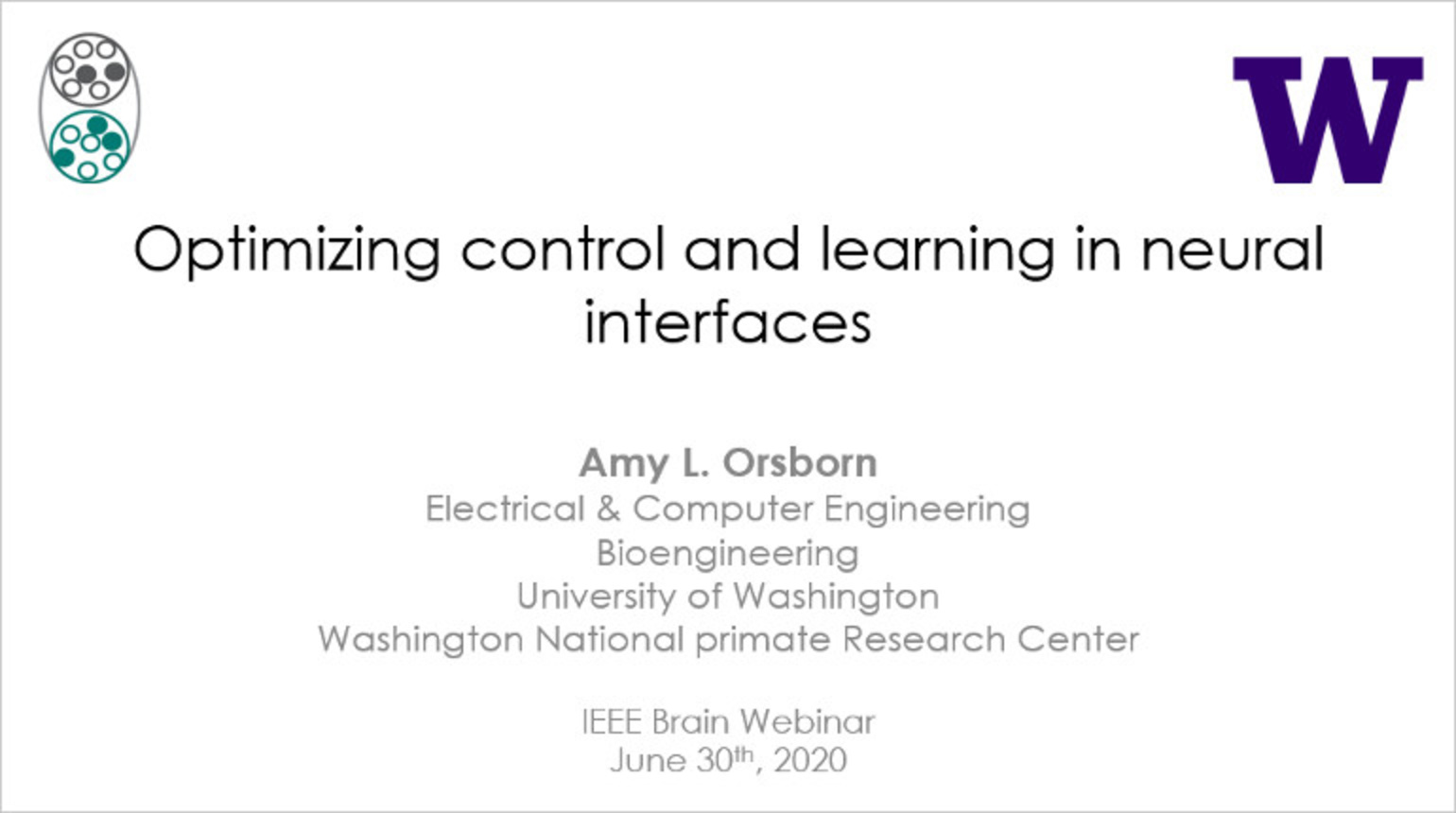
Already purchased this program?
Login to View
This video program is a part of the Premium package:
IEEE Brain: Optimizing Control and Learning in Neural Interfaces
- IEEE MemberUS $10.00
- Society MemberUS $0.00
- IEEE Student MemberUS $10.00
- Non-IEEE MemberUS $20.00
IEEE Brain: Optimizing Control and Learning in Neural Interfaces
Direct interfaces with the brain provide exciting new ways to restore and repair neurological function. For instance, motor Brain-Machine Interfaces (BMIs) can bypass a paralyzed person's injury by repurposing intact portions of their brain to control movements. Recent work shows that BMIs do not simply "decode" subjects' intentions - they create new systems subjects learn to control. To improve BMI performance and usability, we must therefore understand how to optimize learning and control in these systems. I will present a survey of recent work and new directions exploring how the design of BMI systems influence BMI performance. I'll touch on the importance of control loop design, brain-decoder interactions and multi-learner approaches, and network-informed neural signal selection. These examples highlight the role of learning and closed-loop in BMIs, and demonstrate the promise of engineering approaches based on optimizing learning and control along with information "decoding."
Direct interfaces with the brain provide exciting new ways to restore and repair neurological function. For instance, motor Brain-Machine Interfaces (BMIs) can bypass a paralyzed person's injury by repurposing intact portions of their brain to control movements. Recent work shows that BMIs do not simply "decode" subjects' intentions - they create new systems subjects learn to control. To improve BMI performance and usability, we must therefore understand how to optimize learning and control in these systems. I will present a survey of recent work and new directions exploring how the design of BMI systems influence BMI performance. I'll touch on the importance of control loop design, brain-decoder interactions and multi-learner approaches, and network-informed neural signal selection. These examples highlight the role of learning and closed-loop in BMIs, and demonstrate the promise of engineering approaches based on optimizing learning and control along with information "decoding."
 Cart
Cart Create Account
Create Account Sign In
Sign In





